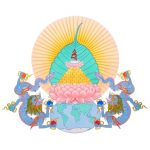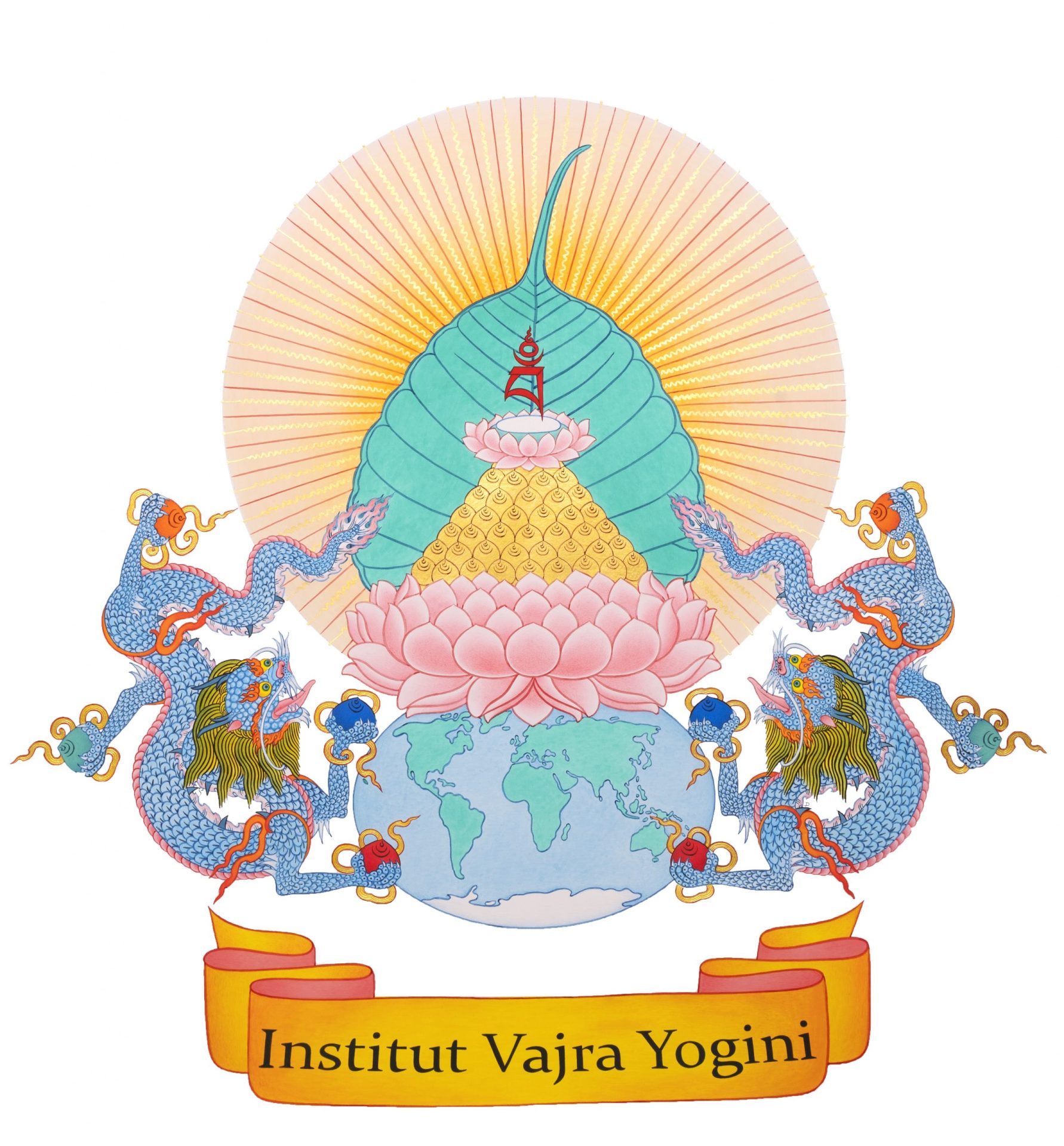The Institute

Our lineage
The Institut Vajra Yogini is a Buddhist center of the Gelukpa tradition, one of the four major schools of Tibetan Buddhism. It is located in the castle of En Clauzades, in Marzens in the Tarn.
Founded by Lama Yeshe in 1979, the Institut Vajra Yogini is part of the Foundation for the Preservation of the Mahayana Tradition (FPMT) whose spiritual director is Lama Zopa Rinpoche.
Teachers
Our primary resident teacher is Geshe Tenzin Loden. Entering Sera Je Monastery at the age of 9, Geshela obtained the title of Geshe in 1994.
The Institute also has several French teachers and hosts many teachers on tour as part of FPMT activities.


Our team
The Institute’s team is made up of employees, residents and volunteers who work to organize various activities and organize the reception of visitors and students in the best possible conditions.
EthiCs
Our Dharma center undertakes to apply the ethical charter of FPMT centers .
The Code of Ethics applies to all activities, interactions or communications, including those online, on social media, by telephone, in person or by any other means, so long as the activity, interaction or communication in question concerns or relates to actions, duties or responsibilities related to the FPMT center.

Story
Story
The Institute was established in 1979 by French students of Tibetan Buddhism who met Lama Yeshe and Lama Zopa Rinpoche at Kopan Monastery, near Kathmandu, Nepal. A generous donation from Denis Huet then made it possible to buy the Château d’En Clauzade, which had been the property of the Count of Toulouse-Lautrec for a long time…
A first community led by the Venerable Elisabeth Drukier moved into this old dilapidated castle and began to renovate it and organize Buddhist teachings there.
In 1981, Lama Yeshe, who was already the spiritual director of some fifty centers around the world, asked Geshe Losang Tengye to become resident master at the Institute.
In 1982, His Holiness the Dalai Lama visited the Institute for the first time during his very first European tour.
In the years that followed, many of the masters of the Gelugpa school of Tibetan Buddhism came to teach at the Institute. Geshe Losang Tèngyé also teaches most of the great traditional texts. Regular retreats are offered to practitioners.
In 1992, His Holiness the Dalai Lama made his second visit to the Institute . The following year, a large Kadampa stupa unique in the West was consecrated in front of the castle.
The 2000s were marked by the establishment of several of the courses of study recommended by the FPMT, the organization of the centers of Lama Zopa Rinpoche, who succeeded Lama Yeshe in 1984 as spiritual director of the Institute. Two major one-month international retreats guided by Lama Zopa Rinpoche are also organized, the Four Kadampa Deities in 2003 and the 100 million mani retreat in 2009.
In 2008, Geshe Tenzin Loden arrived from India to succeed Geshe Tenzin Dorje , who had come from India in 2003 to allow Geshe Tengye to take a well-deserved retirement.
Since 2012, the Institute has organized a retreat of 108 Nyoung Nès every year from November to June, which attracts practitioners from all over the world.
A growing number of visitors and students take part in the many activities offered throughout the year by the castle team.
In 2019, the Institute celebrated its 40th anniversary with a Vajra Yogini retreat led by Lama Zopa Rinpoche!
In 2023, on April 13, Lama Zopa Rinpoche passed away.
Today the story continues…
Our DNA
Our DNA
In 2008, Lama Zopa Rinpoche had advised that all logos of FPMT centers, projects and services include basic elements symbolizing the vast activities that flow from his vision for the transmission of the Mahayana Dharma.
Meaning of the logo
It represents the place and sentient beings in this world and in other worlds. Being on the world means that the center, project or service exists to benefit all sentient beings, the whole world, and that the whole world supports the center, project or service.
He reminds us that this flower is born from mud, that the spirit of sentient beings is by nature pure, unsullied by real existence, like the lotus born from mud but unsullied. The lotus represents the Sangha, the pure monks and nuns, who grant the wishes of all beings, causing all sentient beings to follow the path to enlightenment.
In particular, it signifies Lama Tsongkhapa’s unshakable right view, understanding the middle way, cutting the root of samsara and revealing the truth to others. The wisdom sword of realization of emptiness cuts the root of samsara for oneself and for all sentient beings.
It is the text that reveals the whole path to enlightenment through listening, reflection and meditation. Understand the teachings and be able to realize the path.
The pile of jewels: it signifies the fulfillment of the wishes of all sentient beings – it creates the cause of success and all realizations, from guru devotion to enlightenment, and enables the wishes of all sentient beings to be fulfilled. sentient beings. The jewels also signify that one receives all the needs and conditions necessary to complete the path. Especially for the whole Sangha to be able to fulfill the wishes of all sentient beings.
The syllable BAM symbolizes Vajra Yogini, the enlightened deity of the highest tantra, the manifestation of the wisdom of all Buddhas.
The bodhi leaf means that all practices on the path to enlightenment, from guru devotion to enlightenment, must come from the good heart, from bodhicitta, from the thought of benefiting others. The bodhi leaf also signifies how you guide countless sentient beings with bodhi mind, good heart. Bodhicitta is the practice of the heart, in order to bring everyone to this. This is what makes it possible to achieve enlightenment.
The rays emitted by the bodhi leaf mean that one spreads the light of the dharma in the ten directions to all sentient beings and dispels the ignorance of all sentient beings.
Dragons represent strength – being very strong in heart and mind, strong in dharma practice, strong in higher training – morality, vows, higher concentration, wisdom, as well as overcoming all obstacles – internal obstacles, illusions and external obstacles, such as financial needs.








